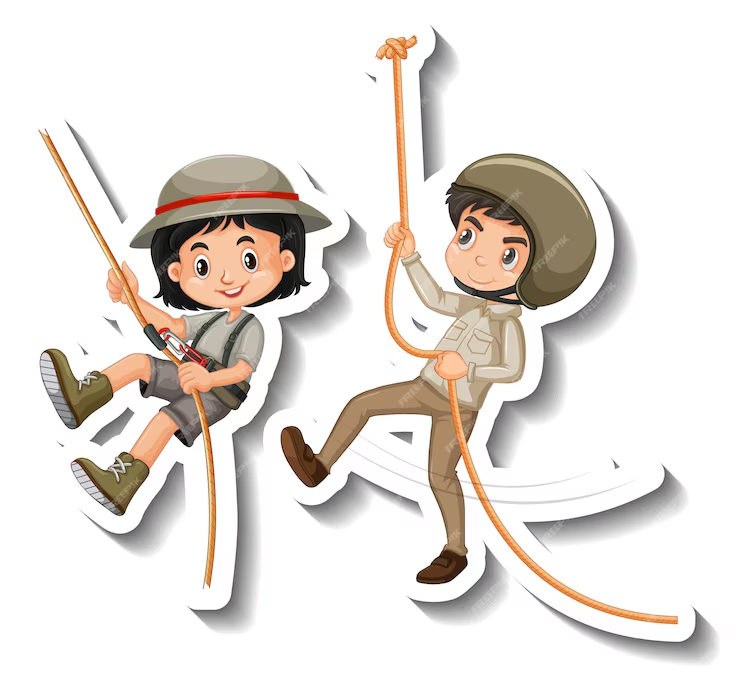All our senses work together as a team, along with our cognitive skills, to help us navigate and participate successfully in our world. Among these senses, the vestibular system and proprioception play crucial roles in movement, balance, and body awareness.
The Vestibular System: Movement and Balance
The vestibular system, located in the inner ear, is responsible for detecting motion and affects our posture, balance, movement, coordination, attention and arousal. Think of it as the body’s GPS for movement.
Vestibular input is extremely powerful and can be alerting or calming to the nervous system.
Common Signs of Vestibular Dysfunction:
- Hypersensitivity (Over-responsive): Avoids swings, slides, or activities involving balance.
- Hyposensitivity (Under-responsive): Craves spinning, swinging, and intense movements.
Example of stimulating the vestibular system: Spinning in a chair


Proprioception: Body Awareness and Force Control
Proprioception is the sense that tells us where our body parts are in space without looking at them. It relies on receptors located in the muscles, joints, and tendons that respond to pressure, compression, and stretching.
Functions of Proprioception:
- Helps us generate coordinated movements.
- Guides us to use the right amount of force for activities like holding a pencil or lifting an object.
- Plays a critical role in posture and motor control.
Signs of Proprioceptive Dysfunction:
- Sensory Seeking Behaviors: Crashing, jumping, stomping feet, or enjoying tight hugs.
- Difficulty Grading Movement: Misjudging force, such as pressing too hard while writing or breaking objects accidentally.
Example of sensory seeking behavior: A child who stomps their feet while walking may be seeking proprioceptive input to feel more grounded.


Vestibular System vs Proprioception: What’s the Difference?
Vestibular System
Detects movement, balance, and spatial orientation.
- Located in the inner ear (semicircular canals).
- Activated by head position.
- Plays a key role in balance and arousal regulation.
Proprioception
Provides awareness of body position and force.
- Receptors in muscles, joints, and tendons.
- Activated by weight-bearing and elongation, compression, or traction of muscles.
- Helps with force control and coordinated movements.
How They Work Together: An example is when you walk across a room, the vestibular system tells your brain your head is moving, and proprioception confirms that your legs are in motion.
OT Insights: Why Understanding These Systems Matters
Occupational therapists (OTs) often address vestibular and proprioceptive challenges to improve balance, coordination, and self-regulation in individuals. Understanding these systems is essential for therapists, caregivers, and educators to:
- Support children with sensory integration difficulties.
- Develop tailored sensory activities for self-regulation.
Ready to Master the Vestibular and Proprioceptive Systems?
For a detailed breakdown of vestibular input, proprioceptive interventions, and OT strategies to address sensory challenges, join Pass the OT today!
Enroll Now and gain access to in-depth guides, videos, and expert support to pass your NBCOT® exam with confidence!
What is the role of the vestibular system in daily functioning?
The vestibular system is crucial for balance and spatial orientation, heavily influencing head, eye, and postural movement coordination. It interacts with brain structures like the cerebellum and thalamus to help manage these tasks.
How can one identify vestibular dysfunction?
Vestibular dysfunction may present as hypersensitivity, where individuals avoid moving activities, or hyposensitivity, where they seek excessive motion through activities like spinning or swinging.
What does proprioception help with, and where are proprioceptors located?
Proprioception aids in understanding body position and required movement force, with proprioceptors located in muscles and joints providing vital sensory feedback for physical awareness.
How do vestibular and proprioceptive systems work together?
These systems complement each other by contributing to efficient movement and perception. The vestibular system manages motion awareness, while proprioception ensures accurate body positioning and movement assessment.
What interventions can occupational therapists use for vestibular and proprioceptive challenges?
Occupational therapists can implement task-oriented interventions that enhance vestibular and proprioceptive input, optimizing sensory processing in children through customized activities.



